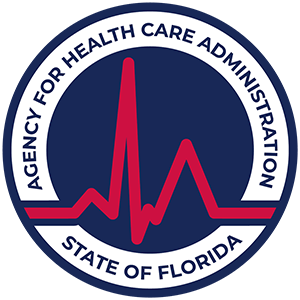What We Treat

Signs of Drug & Alcohol Use in Teens
By recognizing some of the common warning signs of teenage substance abuse, you can better understand and help your teen get the care they deserve.
- Physical Signs: Dilated or enlarged pupils, bloodshot eyes, chronic flu-like symptoms, changes in sleep and appetite, rapid weight loss, change in physical appearance (tooth decay, sunken cheeks)
- Emotional Signs: Unexplained change in personality, rapid mood swings, irritability, aggression, fear, anxiety, paranoia, or depression
- Behavioral Signs: Sudden decline in academics, secretive behavior, drowsiness, slurred speech, memory problems, legal troubles, financial problems

.webp)
Teen IOP Services:
What To Expect
Our Intensive Outpatient Program at Lotus provides teens and their families with the structure and support they need to live a healthy, sober life. IOP is a lower level of care that does not require hospitalization or around-the-clock care.
IOP treatment is ideal for teens who have completed our residential or partial hospitalization program, or who want to continue treatment while staying in school.
- 3 Group Session per week + 1 family session per week + 1 individual session per week
- Combination of individual, group & family therapy
- Goal Planning for Future Success
- Building & Implementing Positive Coping Skills
- Relapse Prevention
- Call Now

What Can Teens Expect During Treatment?
- Family Therapy
- Aftercare Services
- Residential Treatment
- Group Therapy
- Yoga
- PHP (Partial Hospitalization)
- Life Skills Training
- Gym Access
- IOP (Intensive Outpatient)
- Mindfulness & Meditation
- Therapeutic Outings
- 1-on-1 Counseling
- Relapse Prevention
- Nutritious Meals
- Outpatient Therapy
(in-person or telehealth)
What Can Teens Expect During Treatment?
Substance Abuse Treatment: Tailored for The Teen Brain
Mental Health & Substance Abuse Evaluation
We understand that teenage substance abuse is often driven by underlying mental health problems and trauma. When your teen arrives for treatment, they will be given a comprehensive substance abuse evaluation and mental health assessment to identify what treatment is most appropriate for their needs.
Family-Focused Care
We recognize the importance of family in the recovery journey. We encourage parents to stay involved in their teen's treatment process for an increased success rate. Through therapies, activities, and skill-building workshops, we focus on equipping teens with the tools to repair damaged relationships, manage conflict, and form connections.
Evidence-Based Therapies
Our IOP program meets 3x a week for 3-hour sessions. Teens will participate in individual, group, and family therapy. Services may include CBT, DBT. Our licensed clinicians will help teens modify negative thinking patterns that drive substance abuse, then set treatment goals, and develop positive coping strategies.
Relapse Prevention
Throughout our program, we focus on relapse prevention skills by helping teens build a strong support system for them, and coping skills to help them stay substance-free during times of stress. This may include involving family or friends in the recovery process, ensuring teens meet academic requirements during their stay, and connecting them to a peer recovery network.
Medication Management
During IOP treatment, your teen will meet weekly with our board-certified psychiatric provider to address underlying mental health challenges through medication management. When they first enter our treatment program, we look at the medication they are already on—adjusting prescriptions and dosages as needed. Medication combined with therapy can significantly improve treatment outcomes.

Call Now 833-995-6887

Substance Abuse Treatment: Tailored for The Teen Brain


Academic Program
Lotus Behavioral Health holds both treatment and academics as equally important. We understand many teens who enter treatment may fall behind in school, creating extra challenges when they transition back to their daily lives. Teens in our program can receive academic support to help make sure they don’t fall behind and get them up to speed with anything they missed during their time in treatment.
Learn More

Frequently Asked Questions About Teen IOP
How does IOP work?
Intensive outpatient is a lower level of care providing teens with the flexibility to receive intensive treatment while still living at home, staying in school, and being involved in the community. Teens will meet for services 3 hours a day, 3x a week.
What substance abuse disorders do you treat?
We treat substance abuse such as alcohol, opioids, benzodiazepines, and cannabis. We also treat co-occurring mental health disorders as part of our dual diagnosis program.
What level of care does my teen need?
When your teen first arrives for treatment, they will receive a comprehensive assessment to determine what level of care they need. Reach out to our admissions team today so we can help get your teen evaluated and placed in the correct treatment program that meets their individual needs.
Are families involved in the treatment program?
Yes! At Lotus, we believe having a strong support system and family involved in the treatment process can increase recovery success rates for teens.
Does insurance cover teen IOP?
Yes, we accept most major insurance providers including Cigna, Aetna, and BlueCross Blue Shield. Speak with one of our admissions members to verify insurance and find a treatment plan that is best for your teen.

.webp)
Contact Us
Recovery starts today
We are available 24/7 to assist scheduling your teen's assessment
.webp)










.svg)























.svg)
.svg)
.svg)

.svg)











